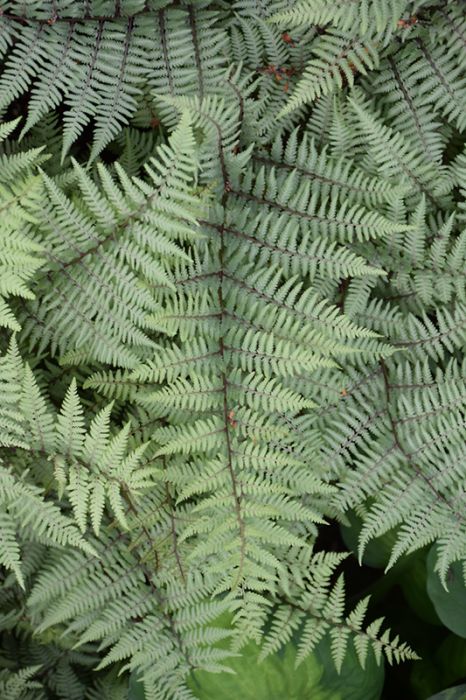Athyrium, Hybrid 'Ghost Fern'




- Sun Preference
- Part-Sun, No-Sun
- Bloom Time
- June, July
Description
Exceptionally silvery green fronds glow in the shade. Dark purple stems give the plants an upright habit.
Minnesota's Largest Selection of Perennials
Discover an unparalleled selection of perennials at Gertens! With the largest variety in Minnesota, we offer endless options of colorful perennials, natives, and pollinator plants to beautify your garden year after year. From vibrant flowers to lush foliage, our perennials are perfect for adding beauty and charm to your outdoor space. Visit Gertens today and see why we're known as Minnesota's Destination Garden Center!
Details
Ghost Fern | Athyrium 'Ghost'
Height: 30 inches
Spread: 24 inches
Sunlight: part shade to full shade
Hardiness Zone: 3a
Brand: Gertens
Description:
Silvery green fronds, glow in the shade; dark purple stems give the plants an upright habit
Ornamental Features
Ghost Fern is primarily valued in the garden for its ornamental upright and spreading habit of growth. Its attractive ferny bipinnately compound leaves emerge silver in spring, turning light green in color with hints of silver throughout the season. The deep purple stems are very colorful and add to the overall interest of the plant.
Landscape Attributes
Ghost Fern is a dense herbaceous fern with an upright spreading habit of growth. Its relatively fine texture sets it apart from other garden plants with less refined foliage.
This is a relatively low maintenance plant, and usually looks its best without pruning, although it will tolerate pruning. Deer don't particularly care for this plant and will usually leave it alone in favor of tastier treats. It has no significant negative characteristics.
Ghost Fern is recommended for the following landscape applications;
- Mass Planting
- Border Edging
- General Garden Use
- Groundcover
- Naturalizing And Woodland Gardens
Planting & Growing
Ghost Fern will grow to be about 30 inches tall at maturity, with a spread of 24 inches. Its foliage tends to remain dense right to the ground, not requiring facer plants in front. It grows at a slow rate, and under ideal conditions can be expected to live for approximately 15 years. As an herbaceous perennial, this plant will usually die back to the crown each winter, and will regrow from the base each spring. Be careful not to disturb the crown in late winter when it may not be readily seen!
This plant does best in partial shade to shade. It prefers to grow in moist to wet soil, and will even tolerate some standing water. It is particular about its soil conditions, with a strong preference for rich, acidic soils. It is somewhat tolerant of urban pollution, and will benefit from being planted in a relatively sheltered location. Consider applying a thick mulch around the root zone over the growing season to conserve soil moisture. This particular variety is an interspecific hybrid, and parts of it are known to be toxic to humans and animals, so care should be exercised in planting it around children and pets. It can be propagated by division; however, as a cultivated variety, be aware that it may be subject to certain restrictions or prohibitions on propagation.
More Information
| Common Family Name | Fern |
|---|---|
| Gerten Grown Plants | Gerten Grown Plants |
| Available for Pre-Order | Yes |
| Sun Preference | Part-Sun, No-Sun |
| Bloom Time | June, July |
| Mature Spread (Range) | 12" - 24" |
| Mature Height (Range) | 25" - 36" |
| USDA Hardiness Zone | 3, 4, 5, 6, 7, 8 |


